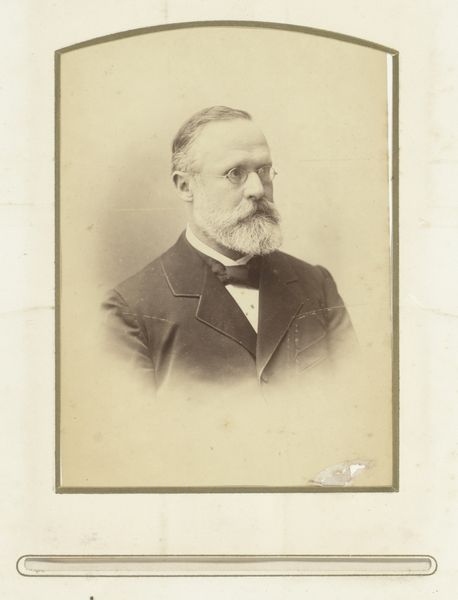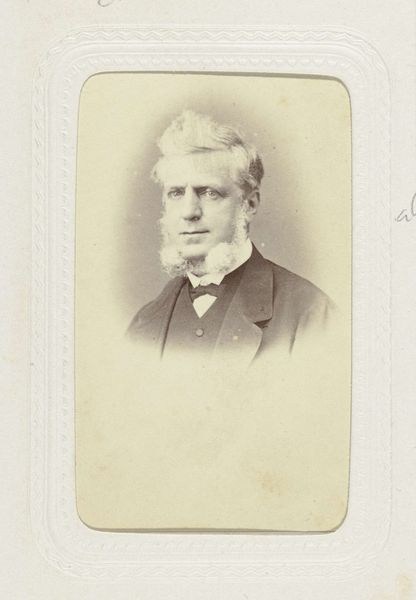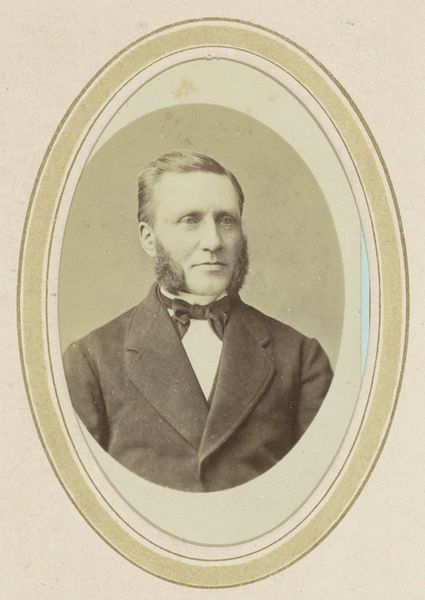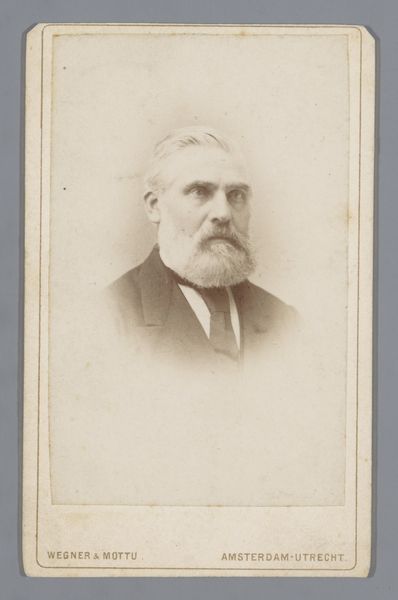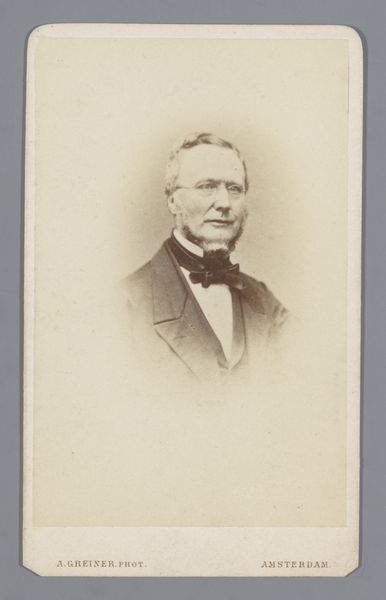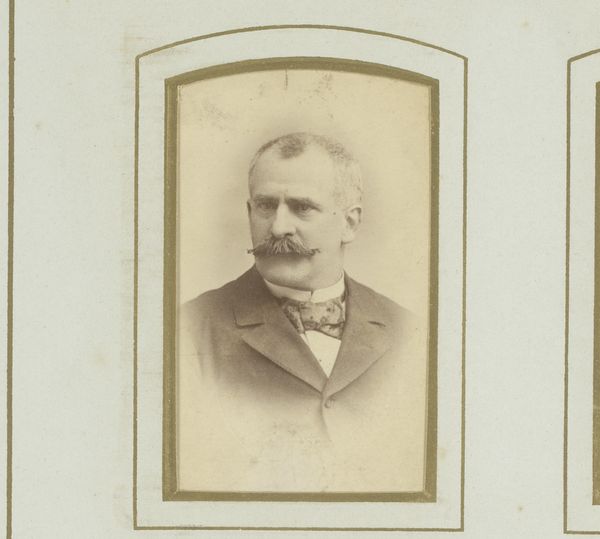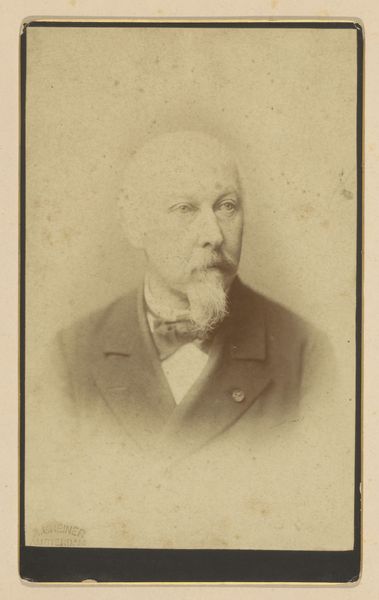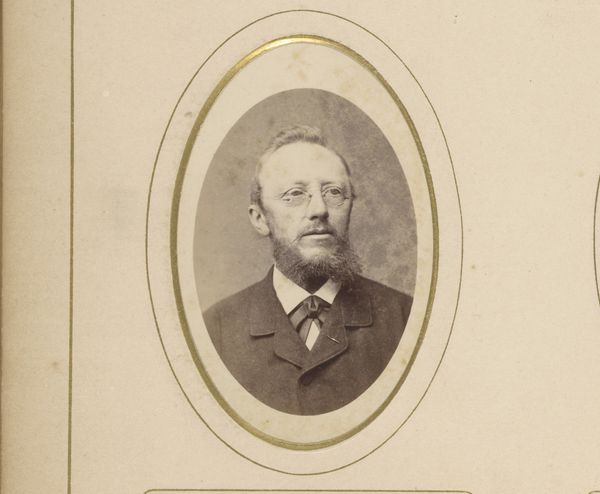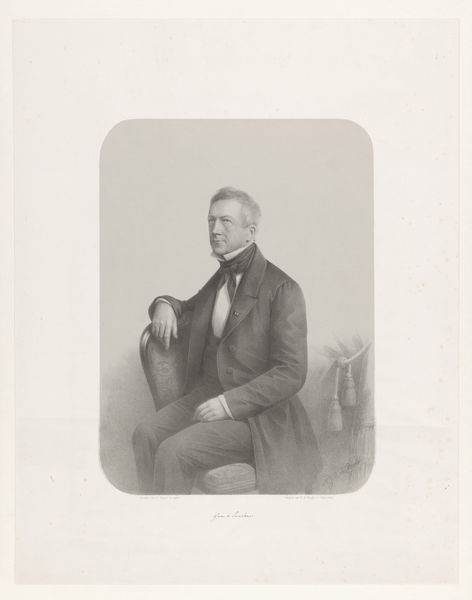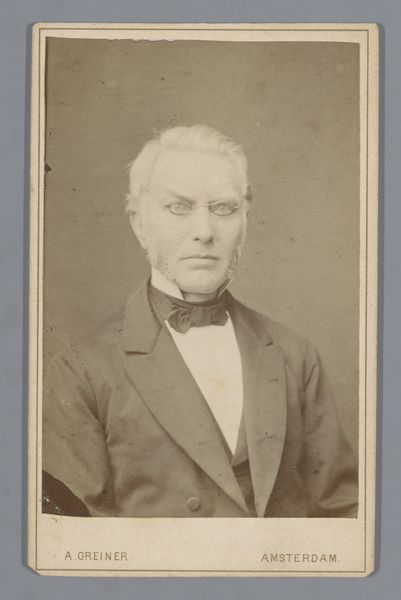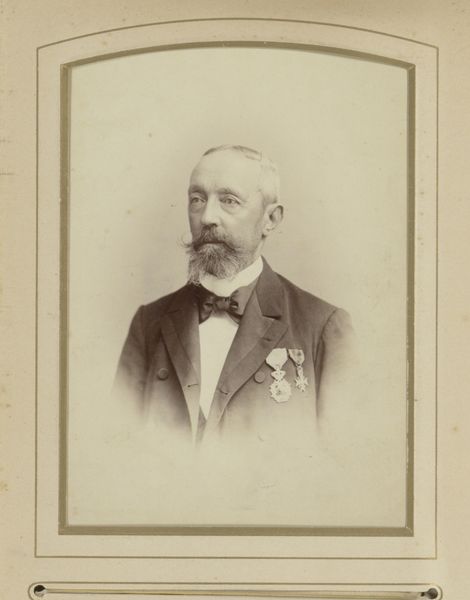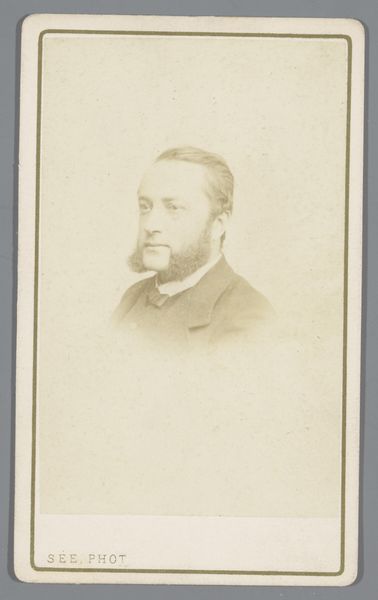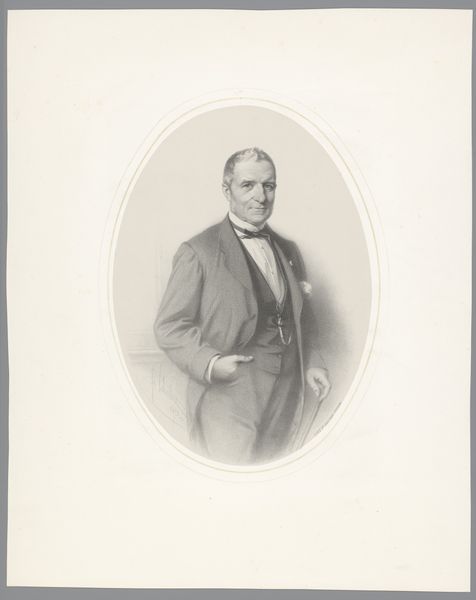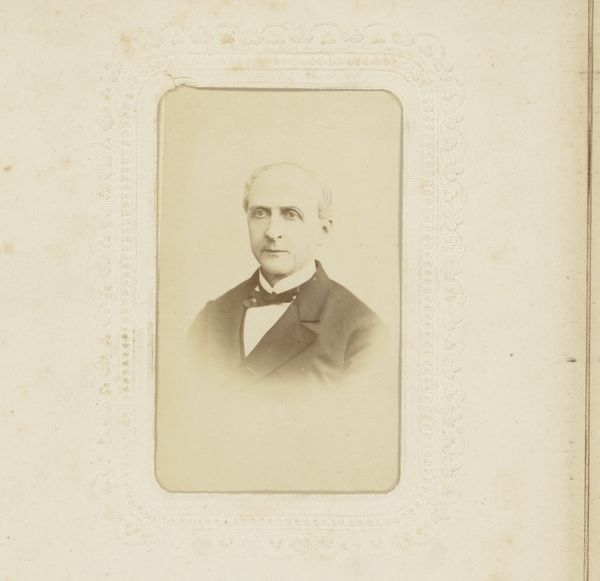
photography, gelatin-silver-print
#
portrait
#
16_19th-century
#
photography
#
gelatin-silver-print
#
realism
Dimensions: height 140 mm, width 96 mm
Copyright: Rijks Museum: Open Domain
Editor: So, this is "Portret van een man met baard" – Portrait of a Man with Beard, dating from around 1883 to 1900, attributed to Carl Emil Mőgle. It's a gelatin silver print photograph. There's a formality to it; the man's direct gaze feels very… deliberate. What do you see in this piece? Curator: Well, let’s consider its time. The late 19th century saw photography becoming increasingly accessible. These portraits served not just as keepsakes, but also as a statement of social standing, a visual representation of the burgeoning middle class. Does the subject's clothing—his suit and bow tie—suggest anything to you? Editor: Absolutely, there’s a clear aspiration there. It's not just about documentation, but presentation. The subject carefully constructed a persona. Curator: Precisely. Now, thinking about the cultural context: photography studios were becoming popular. What did that accessibility mean for how individuals wished to be portrayed? Editor: It allowed for a wider range of people to participate in shaping their own image, controlling their narrative, in a way that painting hadn't allowed previously. Was there also an element of emulating the styles found in painted portraiture of the elite? Curator: A keen observation! Early photography consciously adopted compositional and stylistic elements from painting to gain legitimacy and appeal. How might this blend of accessibility and aspirational imagery affect our perception of history? Editor: It blurs the line between reality and idealised representation, potentially giving us a skewed picture of the past, but perhaps an honest insight into values. Curator: Exactly. We must critically assess the public role that this image performs, and what those kinds of controlled images say about how photography changes how power presents itself to us. Editor: That's fascinating; I hadn’t considered that blend of access and constructed image shaping our view of the era. Thanks. Curator: Indeed. It reveals much about the democratisation of image-making and its inherent biases. Always consider the interplay between production, reception, and the socio-political currents when engaging with art.
Comments
No comments
Be the first to comment and join the conversation on the ultimate creative platform.
